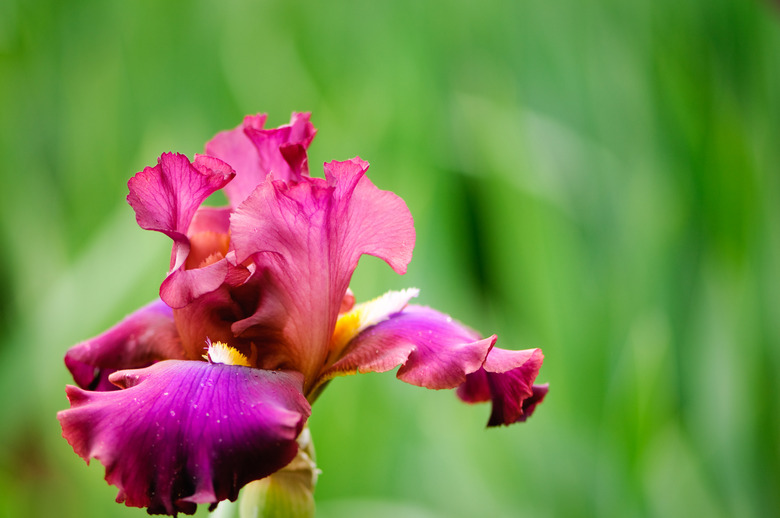Plants That Benefit From Pine Needle Mulch
We may receive a commission on purchases made from links.
If your yard is covered with pine needles from several mature pine trees (Pinus spp.), use the needles as landscape mulch rather than bagging and discarding them, especially around plants that benefit from pine needle mulch. It's a lingering myth that pine needles acidify the soil; the areas where pine trees flourish are sites that already have acidic soil. Even though pine needles are very acidic (with a pH of 3.2 to 3.8), the pH shifts to neutral as they decompose. Other plants that also flourish in the same acidic soil conditions as pine trees are the ones to choose for your landscape around or near pines. Planting these acid-loving flowers and shrubs that also benefit from the pine needle mulch reduces your work and benefit the plants.
Acid-Loving Flowers
Acid-Loving Flowers
Flowers that prosper on acidic soil include Lily of the Valley, dianthus, yarrow, iris, orchid, pinks, rue, hosta and veronica. Some of these flowers, such as hosta and Lily of the Valley, prefer the shade under pine trees. If there is sufficient room between the tree's roots, you can plant these flowers directly on the soil so the pine needles naturally fall down around them. Acid-Loving Shrubs
Shrubs that benefit from pine needle mulch include azalea, gardenia, hydrangea, jasmine, rhododendron, bayberry, Daphne rose and holly. Gardenias benefit from a monthly application of a water-soluble acidic fertilizer and a layer of pine needles smoothed around the base of the shrub. Gardeners use an acidic fertilizer to turn bigleaf hydrangea's flowers blue, but you can skip this treatment if you plant the shrubs on acidic soil. A layer of pine needle mulch around the hydrangeas helps conserve water.
Amending the Soil
Amending the Soil
To determine whether the soil's pH needs to be amended, test the soil in the garden. Take a sample to the local cooperative extension service or use a soil testing kit purchased from a gardening center.
The benefit of getting the cooperative extension service to perform the soil test is that you'll also receive an analysis of any nutrients the soil is lacking so you'll know exactly what kind of, and how much, plant-specific fertilizer to use.
Getting Pine Needle Mulch
Getting Pine Needle Mulch
You can collect pine needles from your own yard if you have pine trees growing on your property. If there aren't any pine trees in your yard, buy pine needle mulch, also known as pine straw, from home garden stores or nurseries.
If you live in an area with pine trees, watch for neighbors who rake and bag their mulch to put out for the trash. Ask if you can have the needles.
Using Pine Needle Mulch
Using Pine Needle Mulch
Remove weeds from the area before applying the pine needle mulch. While mulching can help control weeds, it's easier for the mulch to do the job when you start with a weed-free area.
Spread the pine needles around the plants to the drip line, pulling it about 6 inches away from the plant base or shrub trunk. Wearing gardening gloves helps protect you from pokes from the pine needles. Keep the pine needle mulch around 3 to 4 inches deep. Too shallow a depth won't control the weeds or help the soil retain moisture. Mulch that is too deep keeps the soil too wet, causes disease, rots the roots and attracts rodents and other pests.
Reapply the pine mulch every year. You can add more pine mulch twice per year if you're using it for decorative purposes and want to freshen up the look.
